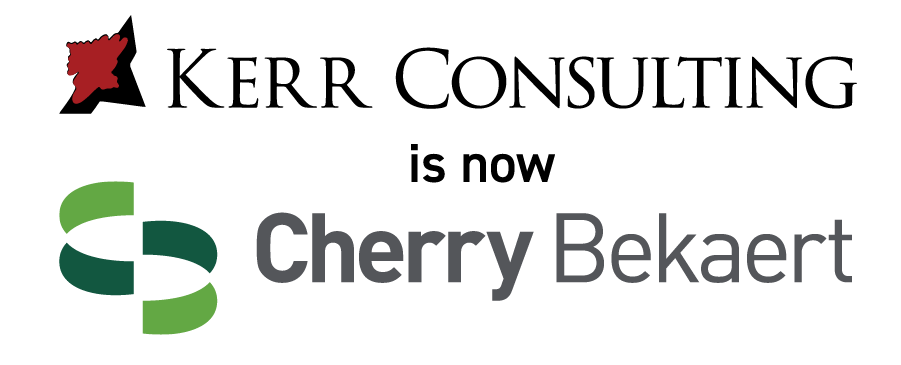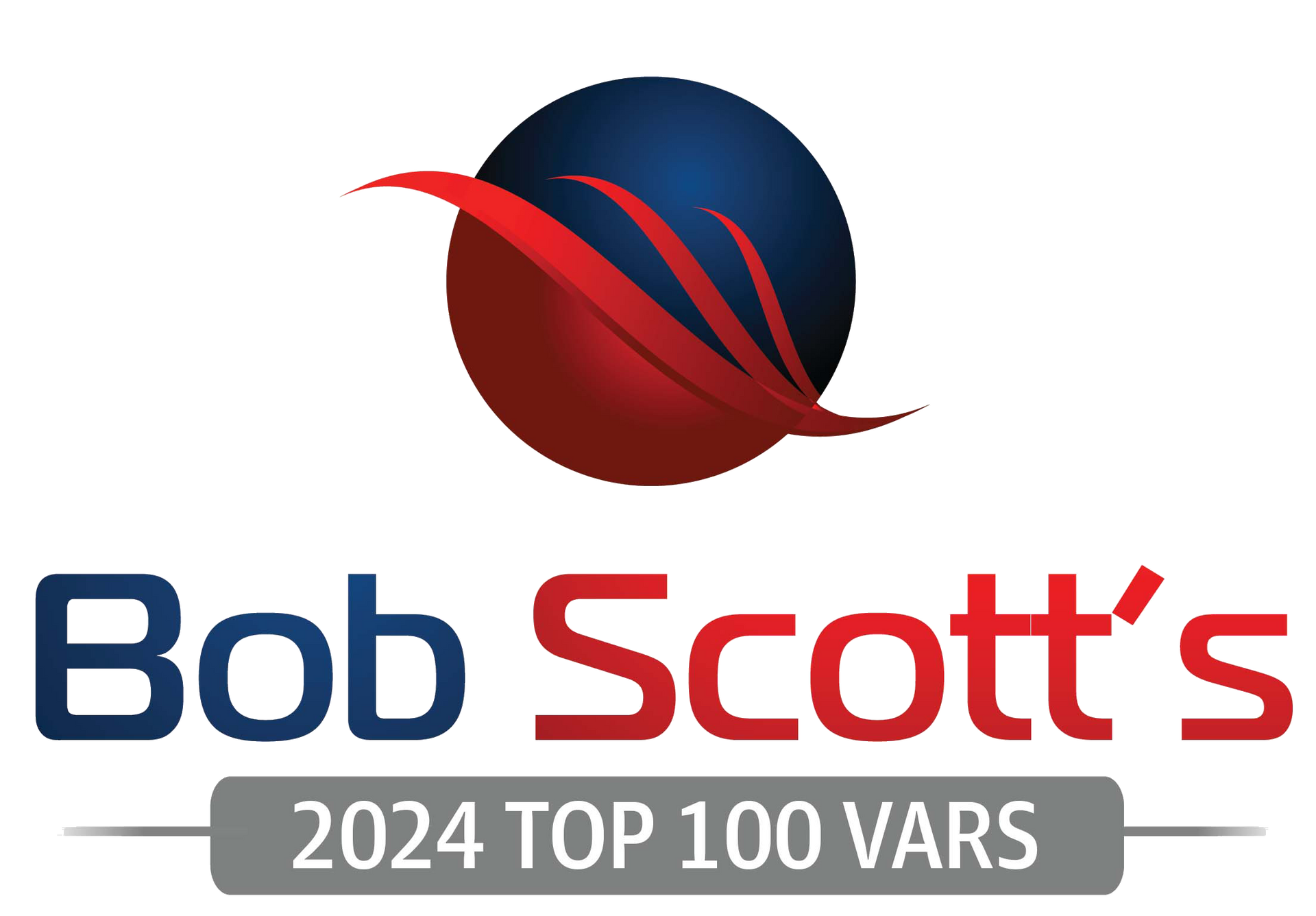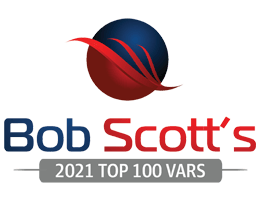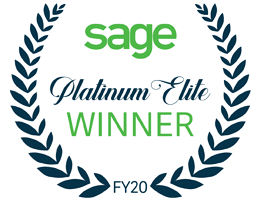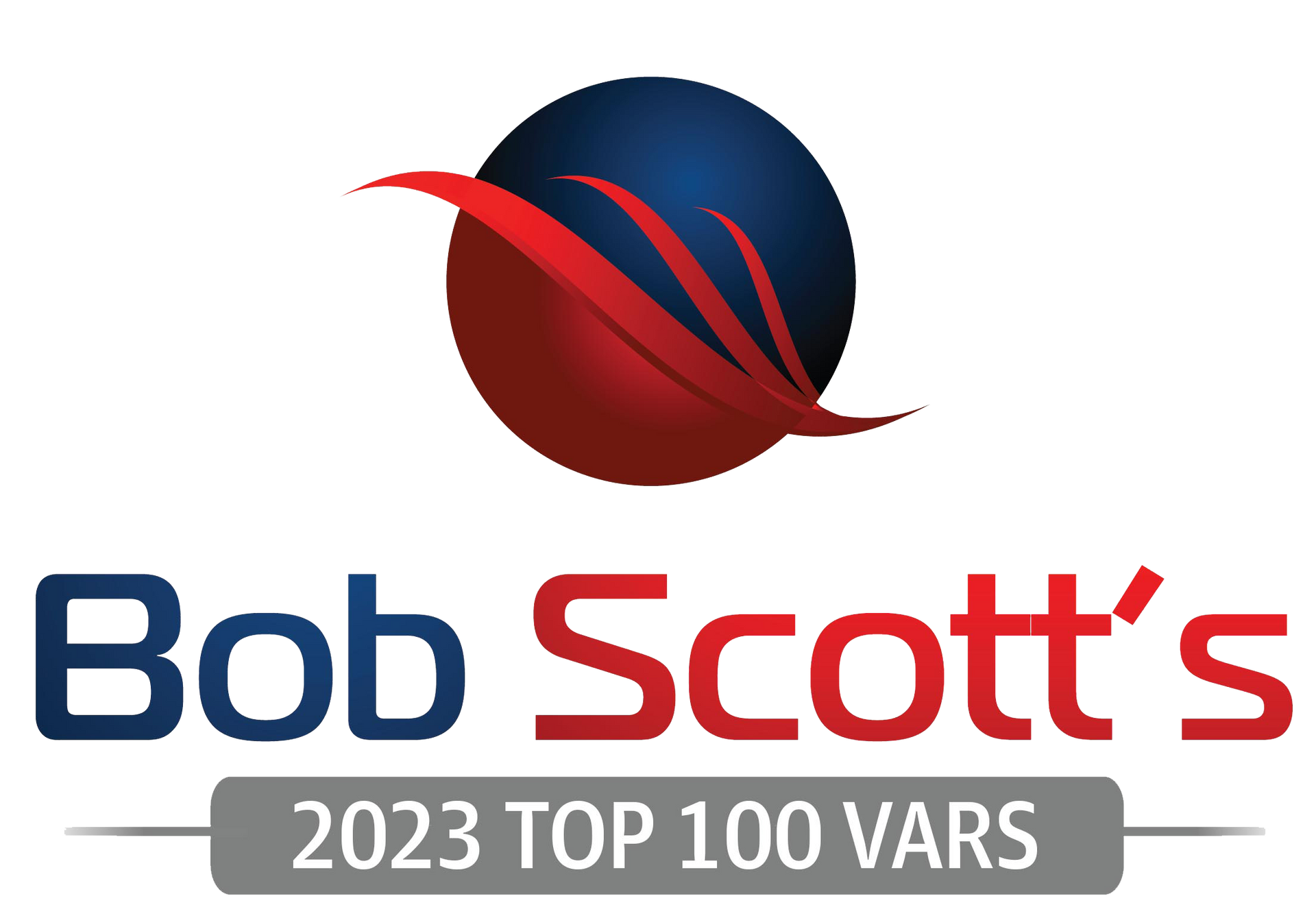The Ultimate Guide to Choosing an ERP System for Distribution Businesses

Introduction
In today's fast-paced world, where efficiency is not just a goal but a necessity, distribution businesses are constantly seeking ways to streamline their operations. The right Enterprise Resource Planning (ERP) system can be a game-changer in this quest. Welcome to "Maximizing Efficiency: The Ultimate Guide to Choosing an ERP System for Distribution Businesses," brought to you by Kerr Consulting. Our aim is to guide you through the maze of options and features to find the ERP system that fits like a glove for your distribution business needs.
Understanding the Basics of Distribution ERP
Before diving into the myriad of ERP options available, it’s crucial to understand what an ERP system is and how it can transform your distribution business. At its core, an ERP system integrates various business processes – from inventory management to order processing – into a single, cohesive system. This integration is key to achieving real-time visibility and control over your operations, making your business not only more efficient but also more responsive to market demands.
Key Features of Top Distribution ERP Systems
When it comes to distribution businesses, not all ERP systems are created equal. The best ones offer specific features tailored to the unique challenges of distribution. These include advanced inventory management that helps track and manage stock levels efficiently, seamless order processing to ensure timely deliveries, and robust supply chain management tools for unparalleled transparency and control. In this section, we'll explore these essential features in detail, helping you understand what to look for in a top-tier Distribution ERP system.
Advanced Inventory Management
Key Aspects:
- Real-time Inventory Tracking: This feature enables businesses to monitor stock levels in real-time, ensuring accurate and up-to-date information.
- Automated Reordering: The system can automatically generate purchase orders when inventory levels fall below a predefined threshold, helping avoid stockouts.
- Demand Forecasting: Using historical data, the ERP can forecast future inventory needs, aiding in better inventory planning and management.
Benefits:
- Reduced Overstock and Stockouts: By maintaining optimal inventory levels, businesses can minimize the costs associated with excess stock and lost sales due to stockouts.
- Improved Inventory Turnover: Efficient inventory management leads to a faster turnover rate, which is crucial for maintaining product freshness, especially in businesses dealing with perishable goods.
Seamless Order Processing
Key Aspects:
- Integrated Order Management: The ERP system should integrate order processing with inventory and customer management, streamlining the entire order-to-delivery process.
- Automated Order Entry: Automation of order entry reduces manual errors and speeds up the processing time.
- Customizable Workflow: Ability to customize the order processing workflow according to business needs.
Benefits:
- Enhanced Customer Satisfaction: Faster and more accurate order processing leads to improved customer service and satisfaction.
- Operational Efficiency: Automation and integration lead to reduced manual effort and quicker fulfillment times.
Robust Supply Chain Management Tools
Key Aspects:
- Supply Chain Visibility: The ERP should offer comprehensive visibility into the entire supply chain, from procurement to delivery.
- Vendor Management: Effective tools for managing relationships with suppliers, including contract management and performance tracking.
- Logistics and Transportation Management: Features for optimizing logistics operations, including route planning and freight management.
Benefits:
- Increased Transparency and Control: Complete visibility into the supply chain allows for better decision-making and more effective control over supply chain operations.
- Cost Savings: Efficient supply chain management can lead to significant cost reductions by optimizing procurement and logistics processes.
In summary, when evaluating Distribution ERP systems, it’s crucial to look for these advanced features. They are not just about managing your current needs but are also geared towards future-proofing your business operations, ensuring that as your distribution business grows and evolves, your ERP system continues to support and drive its success.
How to Evaluate the Best ERP for Your Distribution Business
Selecting the right ERP system is not just about ticking off a list of features. It's about finding a solution that aligns perfectly with your business's specific needs and goals. Here are key criteria to consider:
- Scalability: Can the ERP grow with your business?
- Customization: How easily can it adapt to your unique business processes?
- User-friendliness: Is the system intuitive and easy to use for your team?
- Integration capabilities: Can it seamlessly integrate with your existing systems?
We'll delve into each of these aspects to give you a clear picture of what makes an ERP system the right fit for your distribution business.
Comparing Cloud-based vs On-premise ERP Solutions
In the world of ERP solutions, one key decision is choosing between cloud-based and on-premise systems. Each comes with its own set of pros and cons. Cloud-based ERPs offer flexibility, lower upfront costs, and ease of access from anywhere. On the other hand, on-premise solutions provide greater control over data and can be more customizable. Understanding these differences is crucial in making an informed decision that best suits your business needs.
The Impact of ERP on Distribution Efficiency
Implementing an ERP system has a profound impact on the efficiency of distribution operations. By automating key processes, providing real-time data, and improving inventory accuracy, ERPs enable businesses to make faster, more informed decisions. In this section, we'll look at real-life examples and case studies that showcase how an ERP system can revolutionize the way distribution businesses operate, leading to significant improvements in productivity and customer satisfaction.
Real Life Examples
Implementing an ERP system can fundamentally transform the efficiency of distribution operations, as evidenced by numerous real-life examples and case studies. By automating key processes, providing real-time data, and improving inventory accuracy, ERP systems enable businesses to make faster, more informed decisions, leading to significant improvements in productivity and customer satisfaction.
One notable example is a mid-sized distribution company specializing in medical supplies. Before implementing an ERP system, they struggled with manual inventory management and inefficient order processing, leading to frequent stockouts and delayed deliveries. After transitioning to a comprehensive ERP solution, they achieved real-time inventory tracking and automated order processing. This shift not only reduced their stockout incidents by 75% but also improved order fulfillment times by 50%, greatly enhancing customer satisfaction.
Another example is a food distribution company facing challenges in managing its complex supply chain and fluctuating demand. Post-ERP implementation, they leveraged the system's demand forecasting and supply chain management tools. The result was a more responsive and agile operation, capable of adjusting to market changes swiftly. The ERP system's data analytics capabilities allowed them to predict demand patterns accurately, leading to a 30% reduction in waste due to perishable goods and a 20% improvement in supply chain efficiency.
A third case involves a large distributor of electronic components. Before ERP, their disparate systems led to data silos and operational inefficiencies. By integrating their operations under a single ERP system, they gained a unified view of their operations, from inventory to customer relationships. This integration led to improved cross-departmental collaboration and data-driven decision-making. The outcome was a notable increase in operational efficiency, with a 40% reduction in processing errors and a 35% improvement in customer response times.
These examples highlight the transformative impact of ERP systems on distribution businesses. From enhancing inventory management and order processing to optimizing supply chain operations, ERP solutions provide the tools necessary for businesses to adapt, grow, and thrive in competitive markets.
Real-time Data and Analytics in Distribution
In the era of data-driven decision-making, the ability of an ERP system to provide real-time data and analytics is invaluable. This feature allows for instant visibility into every aspect of the distribution process, from inventory levels to order status. By harnessing the power of real-time data, businesses can anticipate issues, adjust operations on the fly, and ultimately, stay ahead of the competition. We'll explore how an ERP system can turn data into actionable insights, driving efficiency and growth for your distribution business.
Making the Right Investment: Cost vs. Value in Distribution ERP
Investing in an ERP system is a significant decision, especially when considering the cost. However, it's important to weigh this against the long-term value it brings. From reducing operational costs to improving customer satisfaction, the right ERP system can deliver substantial returns. This section will guide you through assessing the costs, understanding the potential ROI, and why, in the long run, an ERP system is not just an expense but an investment in the future of your business.
Assessing Costs of ERP Systems
Investing in an ERP system represents a significant decision for any distribution business, particularly in terms of cost. Yet, it's critical to consider this investment against the backdrop of the long-term value it brings. The right ERP system isn't merely an expense; it's an investment in the efficiency, scalability, and future success of your business.
When assessing the cost of an ERP system, it’s important to look beyond the initial price tag. The initial setup, customization, training, and ongoing maintenance all factor into the total cost of ownership. However, the returns on this investment can be substantial. A well-implemented ERP system can lead to significant reductions in operational costs. For instance, by automating tasks, streamlining processes, and reducing errors, companies often see a decrease in labor costs and operational inefficiencies.
Moreover, the potential Return on Investment (ROI) extends beyond mere cost savings. An ERP system can dramatically improve inventory management, resulting in lower inventory holding costs and less capital tied up in stock. Enhanced data accuracy and real-time insights lead to better decision-making, often resulting in more strategic purchasing and improved sales forecasting.
A real-world example is a small-to-medium-sized distributor that implemented an ERP system and saw a 20% reduction in inventory holding costs within the first year, along with a 15% increase in sales due to better inventory availability and customer service. Another company, a larger distributor, reported a 30% decrease in operational costs over three years post-ERP implementation, attributing this to more efficient processes and reduced manual labor.
In the long run, an ERP system contributes to improved customer satisfaction. With more accurate order processing and faster delivery times, customer retention rates often increase. This aspect, albeit harder to quantify, can lead to significant long-term financial benefits, as the cost of acquiring a new customer is generally much higher than retaining an existing one.
In conclusion, while the upfront cost of an ERP system can be substantial, the long-term benefits - operational cost savings, improved efficiency, increased sales, and customer satisfaction - often far outweigh the initial investment. By viewing an ERP system as a strategic investment rather than just an expense, distribution businesses can set themselves up for sustained growth and success.
Implementing Your Chosen ERP System
Implementing an ERP system in your distribution business involves several critical steps. Initially, it's essential to establish clear objectives and form a cross-functional project team. Business processes must be aligned with the new system, which may involve customizing the ERP to fit specific needs and integrating it with existing software. A key aspect is data management, ensuring data accuracy and developing a robust migration strategy. Training is crucial; comprehensive training programs tailored to different user groups will facilitate a smoother transition. Testing the system for functionality and user acceptance is necessary to ensure it meets business requirements. Effective communication and change management strategies are vital to address any resistance and keep stakeholders informed.
The actual go-live should be carefully planned, potentially in phases, and followed by a thorough post-implementation review. Lastly, risk management and cost control are imperative throughout the process to mitigate potential challenges and avoid budget overruns. By meticulously planning and executing these steps, your business can successfully implement an ERP system and harness its benefits for operational efficiency and growth.
Conclusion
In conclusion, choosing the right ERP system for your distribution business is a journey that requires careful consideration and planning. By understanding the key features, evaluating your specific needs, and considering the long-term value, you can make an informed decision that propels your business towards greater efficiency and success. At Kerr Consulting, we understand the importance of this decision and are committed to guiding you through every step of this critical process.
Key Takeaways
- Strategic Investment: An ERP system is not merely a cost but a strategic investment that can drive long-term efficiency and growth in distribution businesses.
- Comprehensive Integration: ERP systems integrate various business processes, offering real-time visibility and control, crucial for improving decision-making and operational efficiency.
- Customization and Scalability: The best ERP solutions are customizable and scalable, able to grow and adapt to your business's changing needs.
- Cost-Benefit Analysis: While the initial cost of an ERP system is significant, the long-term benefits in terms of operational cost savings, efficiency improvements, and customer satisfaction often outweigh these costs.
- Improved Inventory Management: Advanced inventory management capabilities of ERP systems can significantly reduce overstock, minimize stockouts, and improve inventory turnover.
- Data-Driven Insights: Real-time data and analytics provided by ERP systems enhance the ability to make informed, strategic decisions, leading to better business outcomes.
- Enhanced Customer Satisfaction: Faster and more accurate order processing, enhanced by an ERP system, leads to higher levels of customer satisfaction and retention.
- Long-term ROI: The long-term return on investment from an ERP system is substantial, with benefits including reduced operational costs, increased sales, and better customer engagement.
- Change Management: Successful ERP implementation requires careful planning, including employee training and adapting business processes to align with the new system.
- Future-Proofing Your Business: Implementing the right ERP system sets a foundation for future growth, making it a crucial step for businesses looking to remain competitive in the dynamic distribution industry.
To wrap up, let's ponder some insightful quotes that encapsulate the essence of our discussion:
"Efficiency in distribution is not about doing more, but doing it smarter."
"The right ERP system transforms data into decisions."
"In the world of distribution, time saved is money earned."
"Adapting to technological change isn’t a luxury, it’s a necessity."
"ERP is not just software, it’s a business solution."
These quotes remind us of the transformative power of the right ERP system in the world of distribution.
